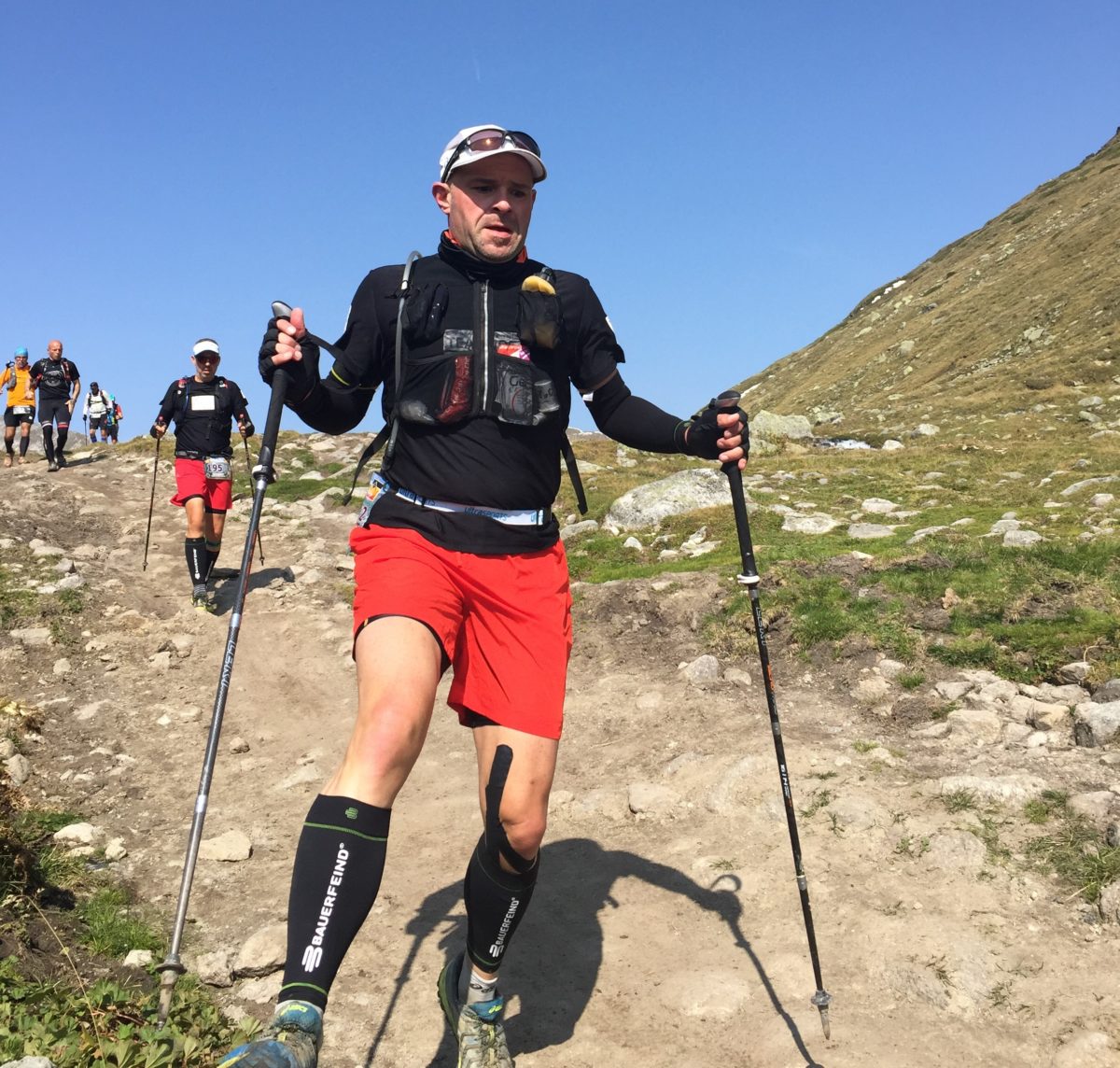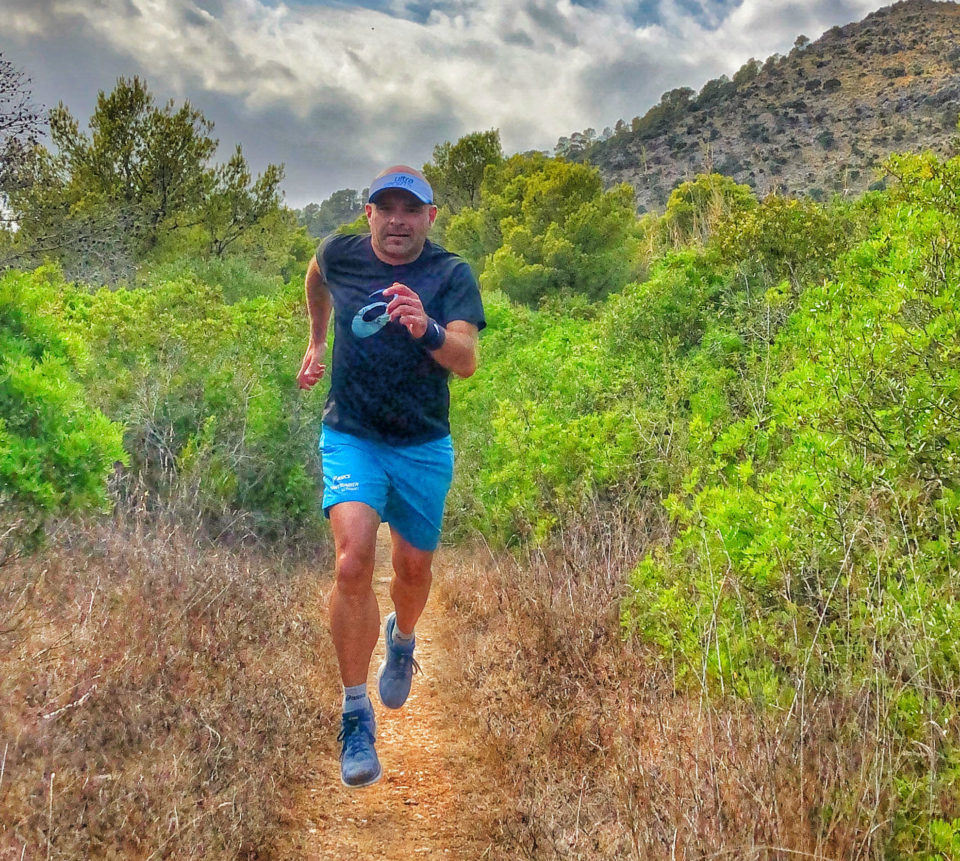
As an experienced trail runner, Frank Bauknecht knows exactly what it takes to run in the great outdoors. In this article, he reveals what you need to bear in mind when your trail running takes you up hill and down dale.
First-hand knowledge – tips for you from Franky Bauknecht
Running uphill when trail running
Cut your speed
- When your trail running takes you uphill, you can’t keep on running at the same speed as on flat ground. You need to adjust your speed. You should develop a feeling for this, to prevent lactic acid building up in your muscles – which can lead to muscle pain, potentially even meaning you have to walk the rest of the trail.
Small steps
- Small steps are vital on uphill stretches. Your stride frequency increases and your knees come up higher. Taking smaller steps makes running easier on rough ground and makes for a surer footing. If you take big steps, the lever action will require too much energy and your performance will rapidly decrease.
Pelvis forward
- When you’re going uphill, you can use gravity to your advantage. To do this, your body should be bent forward – let yourself fall into the hill. When you’re running, always remember to push your pelvis forward. This will also help make you a little more light-footed.
Run on your forefoot
- Taking small steps practically forces you to run on your forefoot. This places a lot of strain on your calf muscles, so it’s important to train these muscles adequately for trail running – preferably by incorporating skipping in your basic running exercises.
Swing your arms
- You should use your arms to propel you as you run uphill. If you use them effectively, this can save energy in your legs. So swing your arms forcefully upward as you run – it helps.
Run in a zig-zag
- On steep terrain, it can really help to zig-zag your way up. The direct route is not always the fastest. Running in a zig-zag places less strain on the leg muscles, allowing you to run more smoothly, and you don’t need to lift your leg as high.
Incorporate breaks
- On extremely steep sections, you can also incorporate breaks by switching to walking. It won’t do any harm, and it allows your body to recover a little. The time you lose by walking will be insignificant.
Plant poles close to your body and push up
- Using poles when you’re running can only be a good thing. Getting the technique right is vital to save energy. Pushing with your arms supports your leg muscles and spares them. Your body is pushed upward by the power in your arms and by transmitting this power through the poles.
Double pole plant on steep terrain, diagonal stride on gentler slopes
- Depending on the terrain, it can be helpful to use a double pole plant or a diagonal stride. The double pole plant tends to be used more on very steep terrain, whereas the diagonal stride can also be used to assist you when you’re running normally.
Running downhill when trail running
Never land on your heel – land on your midfoot or forefoot instead
- Powerful forces act on your musculoskeletal system when you run downhill. You should therefore try to run bent forward slightly over the midfoot or forefoot. Landing on your heel first jolts your joints and the force of the impact is absorbed by your knee and heel. This puts considerable strain on your joints. If possible, you should let your foot ‘roll’ as you run downhill and try to ‘glide’ gently along the paths.
Avoid jumping
- Jumping should be avoided when trail running on rough terrain. This is partly due to the high impact forces that jumping produces. However, it is also possible to twist your ankle and injure yourself as you land and come out of the jump. When you jump, make sure you always land on your whole foot and not just on your forefoot.
Run in a zig-zag
- If you find yourself going too fast when running downhill, it is recommended that you run in a zig-zag. This will reduce your speed. The enormous forces will no longer have such strong effect and you will be able to control your running better.
Keep your body at 90 degrees to the slope
- The ideal posture when going downhill is with your body at a 90 degree angle to the slope. On steep terrain, you will be forced to try leaning your body back. If the terrain changes, adopting a posture with your body bent forward will allow you to reach a higher speed without any great effort.
Use your arms for balance
- You should actively use your arms to help you balance. By using your arms as a rudder, you will be able to retain better control of your movements and achieve an active running style.
Plant your poles a little in front of your body
- If you’ve got poles in your trail running gear, you should plant them a little way in front of your body for support. This will help them take the weight of your body and give you a better footing. It’s important you make sure they are the right distance in front of your body. Planting your poles too far in front of your body will give you problems.
Jump through the poles
- One good alternative is to plant both your poles at the same time and support yourself on them as you jump through them. This allows your arm muscles to take some of the weight and not just your leg muscles, relieving the strain on your legs.
Use your poles as above, with a double plant or diagonal stride
- If the terrain is not so steep, using a diagonal stride can also make running easier and spare your leg muscles.
Take your hands out of the loops
- It’s important not to leave your hands in the loops when going downhill with poles. You will be able to protect yourself better if you fall and if a pole gets caught you can simply let go.
Change landing leg
- It’s also important to change your landing leg when you jump to avoid exerting too much stress on one of your legs.
These tips from Franky should ensure that nothing can go wrong next time you’re trail running ? Have fun with them. It can also be worth incorporating these tips into your trail running training. We bet you’re excited to see what Franky Bauknecht has in store for us next time!
Source: SPORT education/events, Frank Bauknecht
